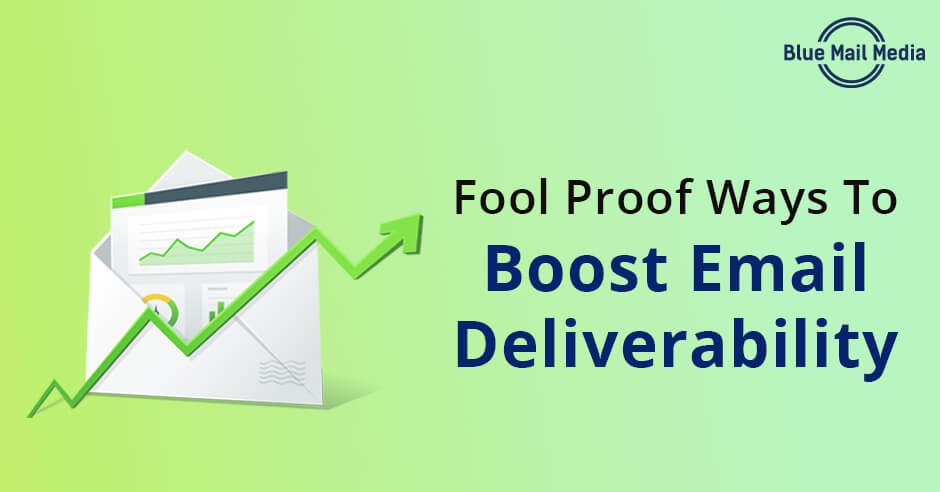
Email Marketing is a powerful way of engaging with buyers. But not every campaign sees the desired success.
Many email campaigns are marred by email bounces and low or no engagement. These issues prevent emails from reaching the intended destination.
Statistics reveal:
- The average bounce rate for all industries is 0.7%.
- The average open rate is 18%.
- The average click-to-open rate is 14.1%.
These numbers point out that bounce rates and low engagement are standard across industries. But here’s a concerning issue.
A high bounce rate and engagement issues affect your email deliverability.
Therefore, these issues must be understood and addressed to prevent your emails from getting lost in the abyss of blacklists and spam folders.
This guide explains why these issues occur and what can be done to prevent them and boost your email deliverability.
Email Bounces – Why Do They Happen?
When your emails don’t get delivered to the intended addresses, they are sent back by the server. This phenomenon is known as Email Bounces.
Email bounces can be put into two categories – Hard Bounces and Soft Bounces.
Hard bounces occur due to invalid, blocked, or non-existent email addresses. For this reason, cleansing your email list is very important. Regular data cleansing is the key to maintaining quality data and improving email deliverability.
Soft bounces are temporary delivery failures that mostly happen due to server issues or when the email size is too large.
Up to a 2% bounce rate is considered acceptable as several factors are beyond our control. But, when the bounce rate exceeds 5%, it requires immediate attention.
You should always aim for lower bounce rates as it would mean that more people will receive your messages. That said; let’s now look at the strategies to lower email bounces.
How To Lower Email Bounces To Boost Deliverability?
Whether you build an email list from scratch or buy it from a vendor, sometimes email bounces are inevitable. They often happen due to wrong email information, blocked IP addresses, server issues, or recipients’ reluctance to receive email messages. Whatever the reason, up to 2% is usually not concerning, but once it starts exceeding this limit; it’s time to fix it using these strategies.
1. Make double opt-in a norm for new contacts.
In single opt-in systems, subscribers fill in their email addresses, and they immediately become a part of your email list. But a disadvantage of this system is that many uninterested contacts or fake email IDs become a part of your list.
A double opt-in requires people to confirm the address that they provided, which is done by sending an automated email immediately after they provide their address. Doing so creates an additional layer of protection to prevent fake or incorrect IDs from becoming a part of your email list.
This double opt-in email from Air Table illustrates how it is usually done.
2. Regularly scrub your email list.
As much as 30% of your email list decays or goes stale every year.
It happens because many people either change or delete their email addresses. B2B customers may change their job or join a new company. Sending emails to such contacts results in hard bounces. Therefore, regularly cleansing your list is vital to ensure you only have authentic and valid email addresses or domains in your inventory.
3. Avoid coming across as spammy
Despite having a clean email list, you may experience email bounce if your emails land in contacts’ junk folders. Below are some ways to ensure your emails don’t look like spam.
- Make sure to fix broken images or formatting issues.
- Don’t forget to insert your address and contact information and in the footer.
- Avoid spam-triggering words in your subject line. Some of them are compiled in the image below.
4. Segment your email lists by engagement.
Segmenting your email list ensures you send emails to your most engaged customers first, ultimately reducing your bounces. With segmentation, you will be able to send your subscribers the most relevant information. As a result, you are less likely to be marked spam or blocked.
How Your Email Engagement Affects Deliverability
Internet service providers or ISPs are increasingly designing their algorithms based on email recipients’ actions.
Therefore, monitoring the actions of your email recipients and taking steps accordingly can help you increase your email deliverability.
Below are the three common actions email recipients take:
- Opened and clicked
- Opened but didn’t click
- Didn’t open
Tracking The Most Common Actions To Boost Email Deliverability
1. Opened and clicked: When your emails are opened and clicked, it means your recipients are highly engaged. High engagement tells ISPs that your email is valuable to recipients. In this case, you should continue with the strategies you are already using.
2. Opened but didn’t click: When your emails are opened, but no action is taken on them, it indicates a medium level of engagement. This means you need to put in more effort to compel recipients to take action. Some strategies include – creating an enticing value proposition or call-to-action. It is crucial to take action when you notice this happening because ISPs may make it harder for the recipients to see whether or not your emails are spam. Take note of what worked in the past and the latest trends for designing effective email campaigns.
3. Didn’t open: When your recipients don’t even open your emails, this indicates unengaged recipients. You have to use a different strategy to re-engage these people. Sending emails to disinterested people lowers your deliverability, ROI and compromises your sender’s reputation, affecting your deliverability. A well-designed re-engagement campaign can fetch you high rewards. Also, it is advisable to pull back on frequency to prevent further damage to your sending reputation.
Conclusion
For your email campaigns to be successful, your emails need to be delivered to your intended audiences. Follow the tips we’ve laid out here to increase your email engagement and lower your bounce rate, ultimately increasing deliverability, ROI, and revenue.




